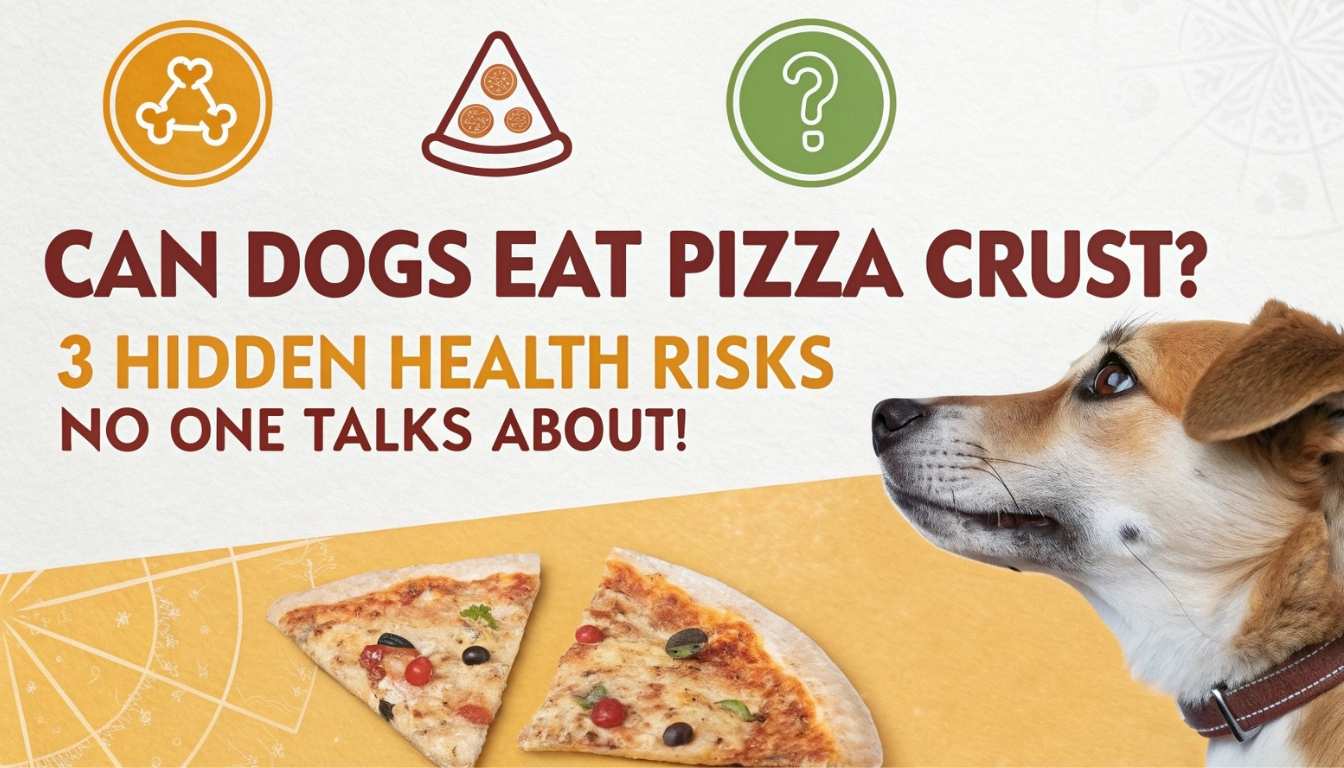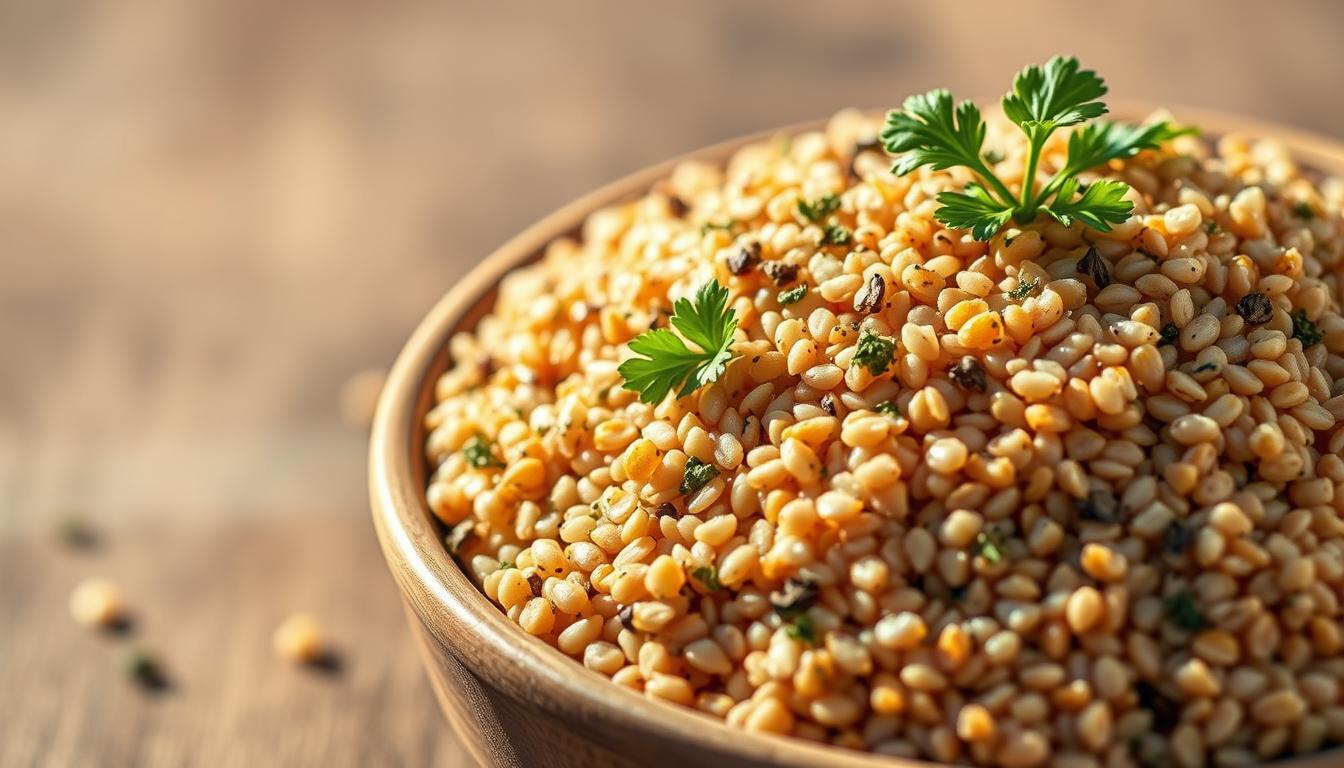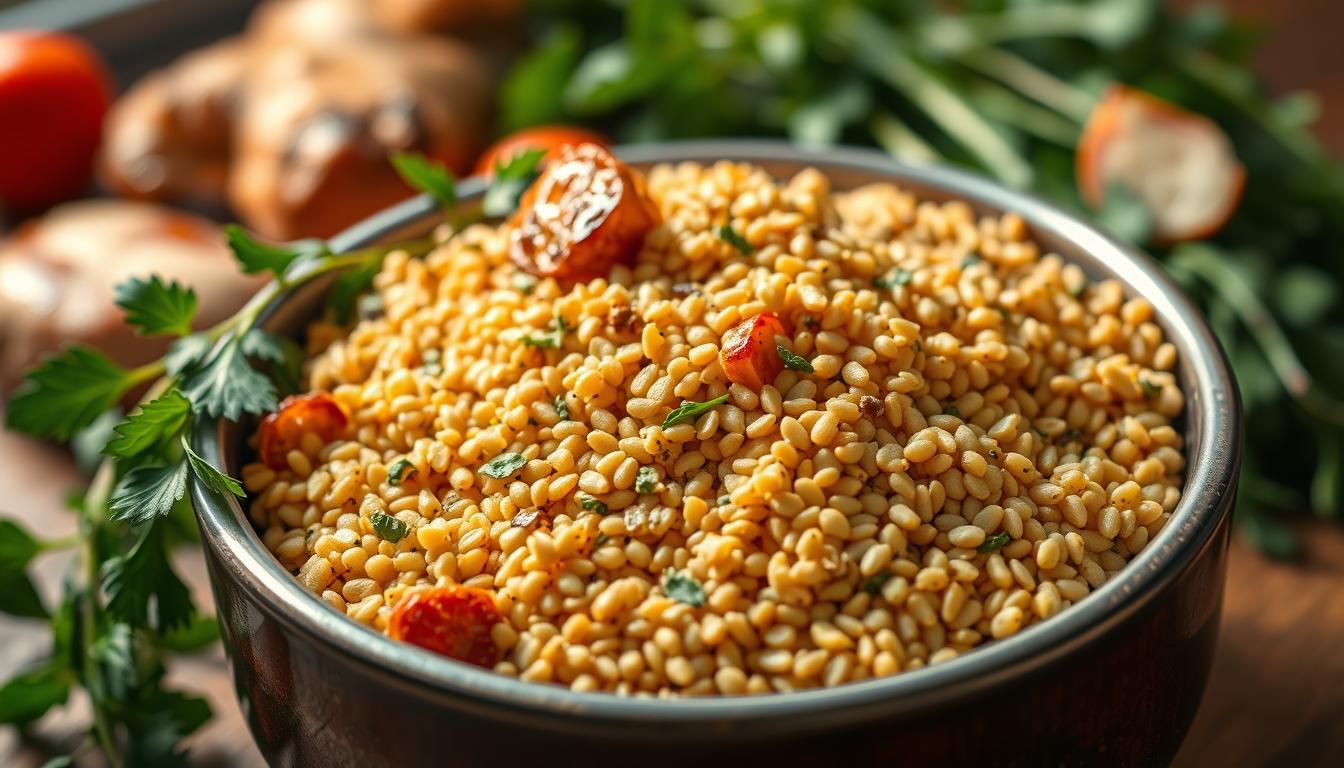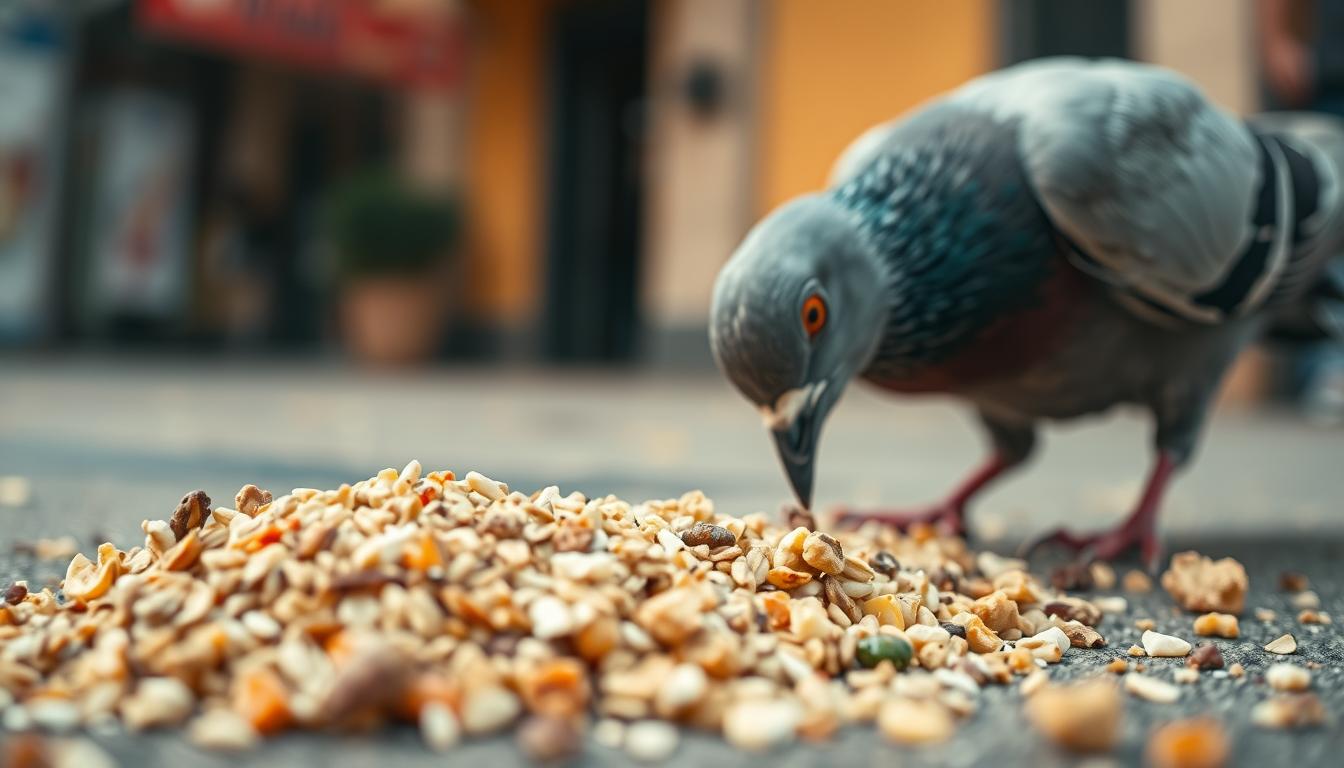Have you ever wondered if sharing a slice of pizza with your furry friend is safe? While pizza is a favorite for many, the question remains: can dogs eat pizza crust? The answer might surprise you.
Sharing human food with pets can be tempting, but it’s important to consider the potential risks. Pizza crust, in particular, contains ingredients that might harm your dog’s health. From high salt content to potential toxins like garlic and onions, these elements can lead to serious issues such as gastrointestinal upset and pancreatitis.
Many pet owners overlook these risks, unaware of how even small amounts of harmful ingredients can affect their dog’s well-being. This article will explore the hidden dangers of feeding pizza crust to your dog, discuss the importance of nutrition tailored to your pet, and provide safe alternatives to keep your furry friend healthy and happy.
Table of Contents
Introduction: Understanding Why This Topic Matters
As pets become integral family members, the line between human and pet diets blurs, sparking curiosity about sharing foods like pizza with our furry friends. This trend reflects a broader shift in how society views pets—as beloved companions rather than just animals.
Overview of Dogs and Human Food Trends
Today, many pet parents are curious about sharing human foods with their dogs, driven by a desire to bond and provide variety. However, this practice often overlooks potential health risks. Pizza, especially its crust, is a common culprit due to high salt and fat content, which can lead to issues like obesity and pancreatitis.
The Rising Curiosity Around Pizza and Pets
While sharing a slice or crust might seem harmless, it’s important to recognize the nutritional differences between human and canine diets. Dogs have specific needs that human food often doesn’t meet, and even small amounts of harmful ingredients can cause significant health problems.
Understanding these dynamics is crucial for responsible pet care. This article will explore the hidden health risks of feeding pizza crust to dogs, providing insights to help you make informed decisions about your pet’s diet.
Nutritional Risks and Hidden Health Dangers in Pizza
When it comes to sharing food with your furry companion, it’s important to recognize the nutritional risks associated with pizza. While a small slice might seem harmless, the ingredients can pose serious health risks to your dog.
High Fat, High Sodium, and Empty Calories
Pizza crust is often high in fat and sodium, which can be harmful to your dog’s health. These ingredients can lead to weight gain and other issues like pancreatitis. Even small amounts can affect your dog’s well-being, making it crucial to avoid such treats.
Potential Long-Term Health Implications
Regular consumption of pizza crust can lead to obesity and diabetes in dogs. The high sodium content can also cause dehydration and, in severe cases, salt poisoning. It’s essential to monitor your dog’s diet to prevent these long-term health complications.
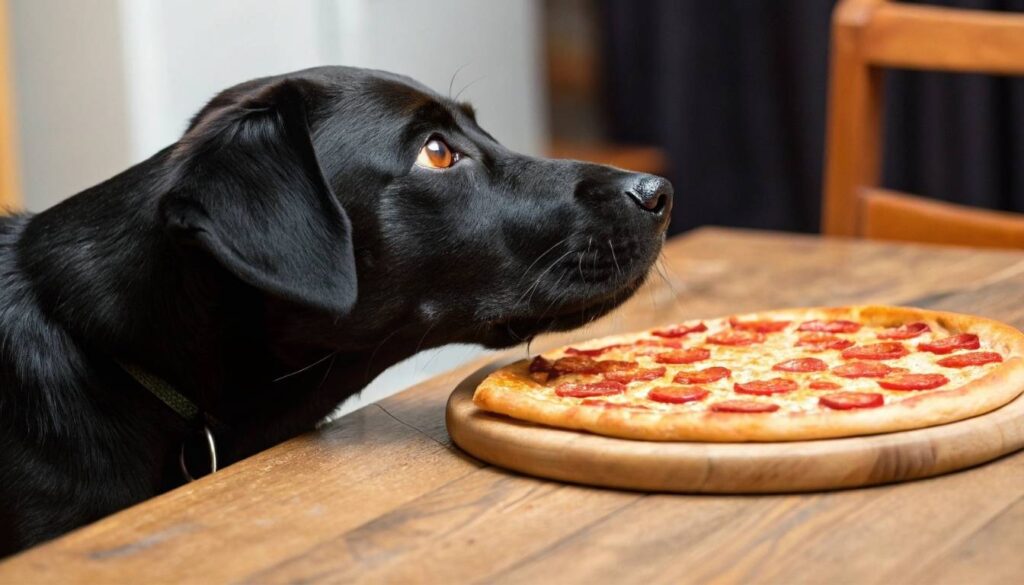
Considering the potential risks, it’s clear that pizza crust isn’t a safe treat for your dog. Instead, opt for dog-friendly snacks that are both nutritious and safe. Always consult with your vet before introducing new foods to your dog’s diet.
Ingredients to Avoid: What’s in Your Pizza?
When considering what your furry friend can safely consume, it’s crucial to examine the ingredients in your pizza. Many of these components can pose serious health risks to your dog.
Onion, Garlic, and Toxic Additives
Onions and garlic are common in pizza sauces and dough, but they are toxic to dogs. These ingredients can cause damage to your dog’s red blood cells, leading to anemia. Even small amounts can trigger vomiting, diarrhea, and lethargy. The risks are severe, so it’s essential to keep these ingredients out of your dog’s reach.
- Onions and garlic belong to the Allium family, which is harmful to dogs.
- These ingredients can cause anemia by damaging red blood cells.
- Even small amounts can lead to serious health issues.
Cheese, Pepperoni, and Excess Salt
Cheese and pepperoni, while delicious, are high in fat and salt. These can lead to obesity and pancreatitis in dogs. The high sodium content in pizza can also cause dehydration and, in severe cases, salt poisoning. Processed meats like pepperoni are particularly risky due to their high fat and sodium levels.
- Cheese and processed meats contribute to high fat and salt intake.
- Excess salt can lead to dehydration and salt poisoning.
- High-fat content increases the risk of pancreatitis.
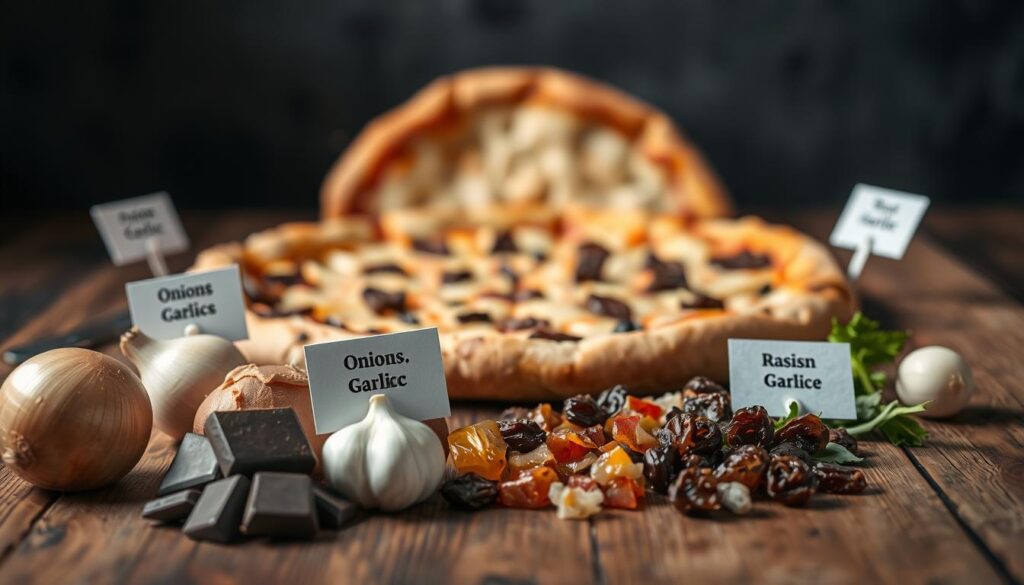
Being mindful of these ingredients can help protect your dog from potential harm. Always read labels and be cautious about what you share with your pet. Their health depends on your awareness and careful choices.
Can Dogs Eat Pizza Crust? Exploring the Main Concern
When considering what your furry friend can safely consume, it’s crucial to examine the ingredients in your pizza. Many pet owners wonder if sharing a slice of pizza crust with their dog is harmless. However, the ingredients in pizza crust can pose serious health risks to your dog.
The pizza crust often contains high levels of salt and fat, which can be harmful to your dog’s health. Even small amounts of these ingredients can lead to issues like obesity and pancreatitis. Additionally, residual onion and garlic in the crust can be toxic to dogs, causing vomiting, diarrhea, and lethargy.
Regular consumption of pizza crust can lead to long-term health complications such as obesity and diabetes. The high sodium content can cause dehydration and, in severe cases, salt poisoning. It’s essential to monitor your dog’s diet to prevent these health issues.
- The high fat and salt content in pizza crust can lead to obesity and pancreatitis.
- Residual onion and garlic in the crust can be toxic to dogs.
- Even small amounts of harmful ingredients can cause serious health problems.
Considering the potential risks, it’s clear that pizza crust isn’t a safe treat for your dog. Instead, opt for dog-friendly snacks that are both nutritious and safe. Always consult with your vet before introducing new foods to your dog’s diet.
Recognizing Symptoms and When to Call Your Vet
It’s crucial for pet owners to recognize the signs of distress in their dog after consuming pizza crust or any harmful food. Prompt action can prevent severe health issues. If you suspect your dog has eaten something toxic, monitor their behavior closely and watch for these key symptoms.
Digestive Issues: Vomiting, Diarrhea, and Upset Stomach
Digestive problems are common reactions to harmful foods. Vomiting and diarrhea can occur within hours of ingestion. An upset stomach may also cause lethargy or loss of appetite. These symptoms can indicate your dog’s body is reacting to toxic ingredients like garlic or onion.
If your dog experiences persistent vomiting or bloody stools, seek veterinary care immediately. These signs can point to serious internal issues that require professional attention.
Warning Signs of Pancreatitis and Other Complications
Pancreatitis is a severe condition that can develop after your dog consumes high-fat or salty foods. Symptoms include abdominal pain, lethargy, and loss of appetite. If left untreated, pancreatitis can lead to life-threatening complications.
- Abdominal pain or tenderness
- Lethargy or depression
- Loss of appetite
- Vomiting or diarrhea
Monitor your dog’s behavior closely after accidental ingestion. If you notice multiple symptoms or severe reactions, contact your vet without delay. Early intervention can significantly improve outcomes and prevent long-term health issues.
Safe Alternatives and Tips for a Healthier Dog Diet
Keeping your dog healthy often means making smart food choices. While pizza might be off the menu, there are plenty of safe and tasty alternatives you can try.
Dog-Friendly Snacks Inspired by Pizza Flavors
Replicating the flavors of pizza without the risks is easier than you think. Consider these nutritious options:
- Lean Chicken and Broccoli Bites: Mix cooked chicken, broccoli, and a touch of low-fat yogurt for a protein-packed snack.
- Sweet Potato and Carrot Slices: These are crunchy, easy to digest, and full of vitamins.
- Green Bean and Apple Treats: Steamed green beans and apple slices make for a low-calorie, fiber-rich snack.
These snacks not only satisfy your dog’s cravings but also provide balanced nutrition. Remember, moderation is key—treats should make up only a small part of your dog’s diet.
Natural foods are always a better choice than processed human foods. They reduce the risk of allergies and digestive issues, ensuring your pet stays healthy and happy. Always consult your vet before introducing new foods to your dog’s diet.
Conclusion
In conclusion, while sharing pizza crust with your dog might seem harmless, the risks associated with its ingredients are significant. High sodium and fat content, along with toxic elements like garlic and onions, can lead to serious health issues such as pancreatitis and digestive problems. These risks make pizza crust an unsuitable treat for your furry friend.
A balanced diet tailored to your dog’s needs is essential for their well-being. Opt for safe, nutritious alternatives like sweet potato slices or green beans, which provide health benefits without the dangers. Remember, the temptation to share human food, especially pizza, should be resisted to protect your dog’s health.
If you suspect your dog has ingested harmful food, monitor their behavior closely for signs like vomiting, lethargy, or loss of appetite. Consulting your vet promptly can prevent severe complications and ensure your dog receives the care they need. Make informed decisions today to keep your dog healthy and happy.
FAQ
Is it safe for my furry friend to have a pizza crust?
While an occasional small piece of plain pizza crust is unlikely to harm your dog, it’s not a nutritionally sound choice. Pizza crusts are high in empty calories, salt, and fat, which could lead to weight gain and other health issues over time. Always prioritize your dog’s balanced diet over human treats.
What risks come with sharing pizza toppings with my dog?
Many pizza toppings, such as onion, garlic, and certain cheeses, can be harmful to your dog. Onions and garlic belong to the Allium family and contain compounds toxic to dogs, potentially damaging their red blood cells. Additionally, high-fat toppings like pepperoni can trigger pancreatitis in dogs.
Can pizza sauce harm my dog?
Pizza sauce typically contains tomatoes, which are safe for dogs in small amounts. However, many store-bought sauces are high in sugar and salt, which are not ideal for your pet. Homemade sauces with fewer additives might be a better option if you choose to share.
How much pizza is too much for my dog?
Even a small slice of pizza can be too much for a dog, especially if it’s loaded with toppings. High-fat content in pizza can lead to digestive upset or even pancreatitis, a serious condition requiring veterinary care. Stick to tiny, plain crust portions if you must share.
What signs should I watch for if my dog eats pizza?
Keep an eye out for vomiting, diarrhea, lethargy, or abdominal pain, as these could indicate your dog is having trouble digesting the pizza. If you notice these symptoms, contact your vet immediately, especially if your dog has eaten toppings like onion or garlic.
Are there healthier alternatives to pizza for my dog?
Yes! Consider dog-friendly snacks like plain, unseasoned meat or small portions of cooked vegetables. You can even make homemade dog treats inspired by pizza flavors, using ingredients like peanut butter, pumpkin, and oats.
Can pizza cause long-term health problems for my dog?
Regularly feeding your dog pizza or pizza crusts can contribute to obesity, diabetes, and other metabolic issues due to their high calorie, fat, and sodium content. It’s best to limit such treats and focus on a balanced, nutrient-rich dog food.
Source Links
- Can Dogs Eat Pizza Crust? Risks and Safe Alternatives – https://www.tryoriginlabs.com/blogs/pet/the-ultimate-guide-can-dogs-have-pizza-crust?srsltid=AfmBOoqfkqXZOGAli2W8Qw6Dj3bPtlSrzjGBlS_4SFUximH2B_wi0aCZ
- What Not to Share: People Foods That Can Harm Your Dog – https://woofcrate.ca/blogs/woofpost-blog/what-not-to-share-people-foods-that-can-harm-your-dog?srsltid=AfmBOorNsIDZUfln5wMuFJg2g0QnUxzRltIfa3B8P6fhn8ifdV-eiZxy
- 3-Ingredient Peanut Butter Banana Dog Treats – https://www.floraandvino.com/3-ingredient-peanut-butter-banana-dog-treats/
- Can Dogs Eat Pizza Crust? Risks and Safe Alternatives – https://www.tryoriginlabs.com/blogs/pet/the-ultimate-guide-can-dogs-have-pizza-crust?srsltid=AfmBOorMHxXWlXm3_HxAoGPBm4JGJcMgU0qNXZ9leq9lC8mx-H1lZDFy
- Do Dogs Need To Eat Meat? | Dog Food Advisor – https://www.dogfoodadvisor.com/canine-nutrition/do-dogs-need-meat/
- What Can Dogs Eat? Human Food Guide | MetLife Pet Insurance – https://www.metlifepetinsurance.com/blog/pet-health/what-can-dogs-eat/
- Can Dogs Eat Pizza? Vet-Verified Nutrition Facts & FAQ – Dogster – https://www.dogster.com/dog-nutrition/can-dogs-eat-pizza
- Can Dogs Eat Pizza Crust? Risks and Safe Alternatives – https://www.tryoriginlabs.com/blogs/pet/the-ultimate-guide-can-dogs-have-pizza-crust?srsltid=AfmBOorutTFgOAohmNtHHkXpX6eaz3ola_GrjYxw_DArkWfWyYH1riUP
- Can dogs eat pizza crust? – https://wamiz.co.uk/dog/advice/182023/can-dogs-eat-pizza-crust
- Can Dogs Eat Pizza Crust? Risks and Safe Alternatives – https://www.tryoriginlabs.com/blogs/pet/the-ultimate-guide-can-dogs-have-pizza-crust?srsltid=AfmBOooJYvEIh6XS2H7edEdMqVLpBaRpEMhrgbeXKCXJIlCaFK6feqaY
- Can Dogs Eat Little Caesars Pizza? Risks & Safe Alternative – https://blog.tryfi.com/can-dogs-eat-little-caesars-pizza/
- Can Dogs Eat Pizza Crust? Risks and Safe Alternatives – https://www.tryoriginlabs.com/blogs/pet/the-ultimate-guide-can-dogs-have-pizza-crust?srsltid=AfmBOooZgo51CDm4asqzuofZGwm_h_KVPcBH9OJ4fAHhL–JDK_wtJrq
- Can Dogs Eat Pizza? Vet-Reviewed Nutrition Facts & FAQ | Hepper – https://www.hepper.com/can-dogs-eat-pizza/
- Can Dogs Eat Pizza Hut Pepperoni Pizza? A Vet’s Perspective – https://blog.tryfi.com/can-dogs-eat-pizza-hut-pepperoni-pizza/
- 44 Dangerous Human Foods & Drinks Dogs Should Avoid | Canine Journal – https://www.caninejournal.com/foods-not-to-feed-dog/
- Can Dogs Eat Grapes? Grape Toxicity in Dogs – https://vcahospitals.com/know-your-pet/grape-raisin-and-currant-poisoning-in-dogs
- Can Dogs Eat Bread? – https://www.pumpkin.care/blog/can-dogs-eat-bread/
- Can Dogs Eat Pizza Crust? Risks and Safe Alternatives – https://www.tryoriginlabs.com/blogs/pet/the-ultimate-guide-can-dogs-have-pizza-crust?srsltid=AfmBOors3Wof8iaxp7f2oSw6-urjIKGJPI-J1Z5ERYePXfYUCMY_6x4e
- Can Dogs Eat Pizza? – https://candogseatpizza.com/can-dogs-eat-pizza/
- Can dogs eat pizza? Everything You Need to Know – Beastly Basics – https://beastlybasics.com/can-dogs-eat-pizza/
- Can Dogs Eat Pizza Crust? Risks and Safe Alternatives – https://www.tryoriginlabs.com/blogs/pet/the-ultimate-guide-can-dogs-have-pizza-crust?srsltid=AfmBOoojwClHTAuqAfpWBlJO3NIg0oX02bo_RBu8ucVYb8I6EKXheSvu
- Maine Coon Cats and Pizza: Dietary Considerations – https://www.petzooie.com/articles/can-maine-coon-cats-eat-pizza

